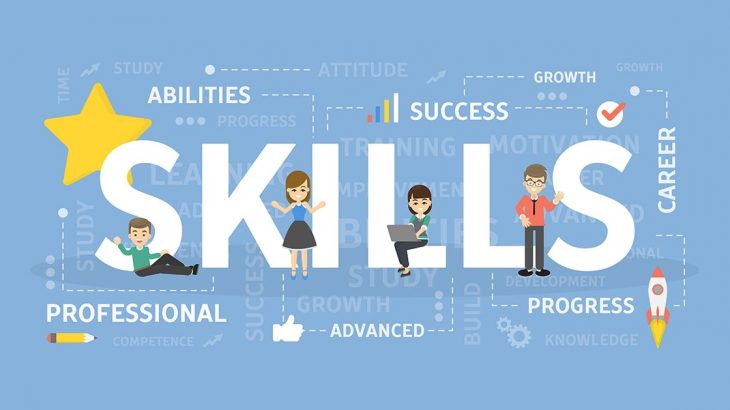In today’s competitive business landscape, Human Capital Management (HCM) is not just about hiring and retaining employees—it’s about nurturing talent, enhancing skills, and aligning workforce capabilities with organizational goals. Among the various frameworks that guide effective people management, the Unique Skill Set (USS) Model stands out as a strategic approach that emphasizes hiring skilled, knowledgeable, and industry-ready professionals.
This article explores the Unique Skill Set Model, its principles, advantages, challenges, and its role in strengthening the foundation of Human Capital Management.
Understanding Human Capital Management (HCM)
Human Capital Management refers to the process of acquiring, developing, and retaining talent that contributes to an organization’s long-term success. Unlike traditional personnel management, HCM treats employees as assets rather than mere resources.
Employees are the driving force behind every organization’s success. Machines, technology, and infrastructure may enable operations, but human intelligence, creativity, and commitment determine whether an organization thrives or fails.
A robust HCM system focuses on:
- Talent acquisition and retention
- Continuous learning and skill development
- Employee engagement and motivation
- Performance management and career growth
When organizations invest in their people, they cultivate loyalty, innovation, and productivity—key ingredients for sustainable growth.
Employee Loyalty and Organizational Attachment
A high-performing workforce doesn’t emerge overnight. Employee loyalty and attachment toward the organization evolve through trust, empowerment, and personal growth opportunities.
Many assume money alone drives employee loyalty, but in reality, non-monetary factors like respect, recognition, career advancement, and a sense of purpose play a more significant role.
Human Capital Management ensures employees feel valued and supported through continuous training, team-building exercises, and skill enhancement programs. When organizations show genuine interest in employee growth, it builds emotional attachment and pride—transforming workers into brand advocates.
The Role of Human Capital Management in Skill Development
HCM focuses not only on hiring but also on upgrading employee knowledge and competencies. It ensures that every team member is well-equipped to meet the organization’s changing needs.
Key initiatives under HCM include:
- Regular internal and external training programs
- Team-building activities that promote collaboration and creativity
- Performance feedback and mentorship programs
- Career development paths for long-term employee engagement
By continuously developing human capital, organizations strengthen their ability to innovate and remain competitive.
What Is the Unique Skill Set (USS) Model?
The Unique Skill Set Model, often abbreviated as USS Model, highlights the importance of hiring professionals who already possess specialized knowledge and industry-specific skills.
Unlike traditional models where companies invest heavily in employee training post-hiring, the USS Model prioritizes recruiting skilled, experienced individuals who can contribute from day one.
According to this model, Unique Skill Set employees bring a combination of:
- In-depth understanding of their field
- Technical expertise and practical experience
- Knowledge of industry best practices
- Problem-solving and innovation skills
This makes them not only more efficient and reliable but also valuable assets capable of driving strategic initiatives without extensive supervision or training.
Key Features and Benefits
The Unique Skill Set Model introduces several strategic advantages that help organizations optimize their workforce efficiency and resource allocation.
- Reduced Training Costs
Since USS Model employees already possess the required skills, organizations save significantly on cross-functional and basic training expenses. They can immediately focus on productivity rather than foundational learning.
- Faster Integration and Higher Productivity
Skilled professionals require minimal onboarding time. They understand industry dynamics, enabling them to adapt quickly and deliver results early in their employment cycle.
- Innovation and Process Improvement
With their prior experience, unique skill set employees contribute fresh perspectives and innovative ideas. They identify opportunities for improvement, streamline workflows, and enhance organizational efficiency.
- Strategic Role Clarity
USS Model employees have a clear understanding of their roles, responsibilities, and objectives. This clarity helps teams work cohesively and focus on achieving business goals without confusion or duplication of effort.
- Reliable and Independent Workforce
These employees require minimal supervision and are capable of managing their tasks autonomously. Their reliability ensures smooth operations even in dynamic or challenging business environments.
Challenges
While the USS Model offers numerous benefits, it also presents certain challenges that organizations must address to sustain long-term success.
- Retention of Top Talent
Highly skilled employees are often in high demand and may be attracted by better offers elsewhere. Retaining such talent requires competitive compensation, growth opportunities, and a strong organizational culture.
- Aging Workforce
As specialized employees grow older, organizations may face skill gaps if knowledge transfer and succession planning are not effectively managed. Continuous learning and mentorship programs can help bridge this gap.
- Limited Flexibility
Since USS employees are deeply specialized, they may lack cross-functional adaptability. Organizations should invest in occasional upskilling programs to maintain flexibility and versatility in the workforce.
Balancing Skill Acquisition and Development
To maximize the potential of the Unique Skill Set Model, organizations must strike a balance between hiring skilled professionals and developing internal talent.
A sustainable approach involves:
- Combining USS hiring with structured training programs
- Encouraging knowledge sharing between experienced and new employees
- Investing in leadership and innovation training
- Building a retention-focused culture that values employee growth
This hybrid strategy ensures the organization benefits from both expertise and continuous learning.
Conclusion
The Unique Skill Set Model redefines how organizations approach human capital management. By hiring skilled and industry-ready professionals, companies can boost efficiency, reduce costs, and accelerate innovation.
However, the success of the USS Model depends on how well organizations retain and nurture these talented individuals. A blend of strategic hiring, meaningful engagement, and continuous development ensures that employees remain loyal, motivated, and aligned with organizational goals.
In today’s fast-evolving corporate world, organizations that invest wisely in their people—both through the Unique Skill Set Model and long-term human capital development—will enjoy sustained growth, innovation, and competitive advantage.








